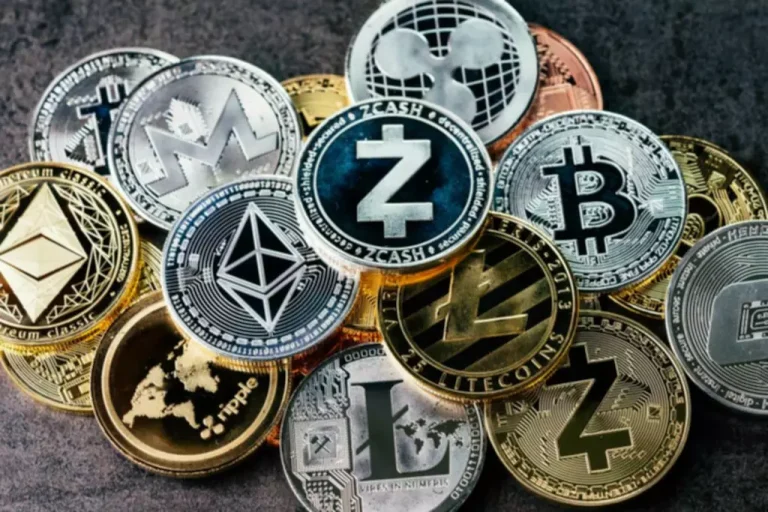Content
This supports the broader DeFi ecosystem by providing stable pair trading and arbitrage opportunities. Stablecoins also enable synthetic assets creation, expanding the range of financial instruments available in the DeFi space. Stablecoins operate in a complex regulatory landscape, with frameworks varying widely across jurisdictions. Many countries lack clear guidelines for stablecoin issuance, trading and use, creating legal uncertainties for users and issuers. Regulators worry about stablecoins’ potential impact on monetary policy, financial stability and consumer protection. Paxos Gold is a popular example, with each token backed by one fine troy ounce of London stablecoin payment for business Good Delivery gold.
Reasons why people may buy stablecoins
Contents
For instance, if a user wants to obtain a stablecoin, they deposit the corresponding amount of collateral, and the smart contract mints the token. Conversely, when a user wants to redeem their stablecoins, they return the coins to the smart contract, which then burns them and releases the corresponding amount of collateral. In this article, we will explore what stablecoins are, how they work, and the roles they play in decentralized finance (DeFi). Before diving headfirst into the world of stablecoins, it’s essential to understand what they are and how they differ from Prime Brokerage their cryptocurrency counterparts.
Crypto-collateralized Stablecoins
Stablecoin transactions, however, often come with much lower fees, since they cut out the need for traditional banks and card networks. Right now, if a customer pays you with a credit card, it can take a few days for that payment to settle in your bank account. Imagine finishing a job, getting paid on the spot, and having immediate access to those funds. Additionally, the EU’s Markets in Crypto Assets regulation, which is nearing finalisation, has indicated that it requires bank-like regulations for systemic stablecoin issuers. When exchanging cash https://www.xcritical.com/ for stablecoins, the system that manages the stablecoin will redeem the specified amount from the reserve, and the user’s bank account will be debited by the specified amount.
The Two Most Common Stablecoins
Innovative governance models are emerging, promoting decentralized decision-making in stablecoin ecosystems. This functionality allows developers to create customized financial products that utilize stablecoins, enhancing their utility in various sectors. Since 2019, policymakers have focused on concerns about risk and regulation related to stablecoins.
This centralization creates single points of failure and concentration of power. Issuers can potentially freeze accounts, block transactions, or alter the stablecoin’s supply, which reduces user autonomy and trust. Ampleforth is another algorithmic stablecoin that adjusts user balances daily based on market conditions. Frax Frax employs a hybrid model, combining algorithmic mechanisms with partial collateralization.
This rapid processing time enhances user experience, making it ideal for various payment scenarios, from everyday purchases to large-scale business transactions. Earn rewards by helping businesses transition to blockchain-powered payroll systems. This partnership aims to meet the increasing demand for easy-to-use stablecoin payment options in Southeast Asia and beyond. Sportsbet.io partners with snooker events, merging crypto and sports for a new era in fintech and blockchain technology. We keep our banking clients abreast of such emerging technologies, trends and innovations, and help them assess the overall impact. The digital disruption the banking sector is facing needs to be understood and evaluated accurately in order to identify which innovations and solutions would be the most apt.
CBDCs, unlike stablecoins, would become auditable and traceable, with central banks not allowing illicit transactions using its money. Additionally, CBDCs are minted on private ledgers while stablecoins are generally issued on a public blockchain by a company. In a world where cryptocurrencies like Bitcoin and Ethereum often make headlines for their volatility, stablecoins stand out as the closest thing to real money (i.e., fiat currency) that currently exists on the blockchain. Stablecoins are a type of digital currency designed to maintain a stable value while gaining the efficiency, mobility, and utility of blockchain-based digital assets. Stablecoins offer distinct advantages over traditional cryptocurrencies and fiat currencies. These include price stability, rapid transactions, cost-effectiveness and global accessibility.
They’re pegged to stable assets, so you don’t have to worry about wild price swings like with other cryptocurrencies. This guide covers the benefits, types, and practical uses of stablecoin payments. Stablecoin payments have become the backbone of the entire crypto ecosystem as they provide a stable and efficient method for global transactions.
Through them, users can earn yield, provide liquidity, and engage in other financial activities with lesser risk of price volatility (though they still carry risk of loss). Tether (USDT) is the leading fiat-backed stablecoin by market cap, and one of the first to be released. USDT is backed by US dollars held in reserve by Tether Limited, with each USDT meant to be worth exactly $1. Tether can be traded on many cryptocurrency exchanges and used in decentralized applications (dApps) as a stable trading pair or in liquidity pools. In some cases, stablecoins are over-collateralized, meaning the value of the collateral exceeds the value of the stablecoins issued.
Depending on the type of stablecoin in question, issuers will employ a combination of collateralization, algorithmic controls, and reserve systems. Where stablecoins offer superior benefits, customers will naturally gravitate toward them,” Miles Paschini, CEO at FV Bank, told PYMNTS. As evidenced by a Monday (Jan. 13) report from the Federal Reserve Bank of Atlanta, stablecoins, increasingly heralded as the bridge between traditional finance and the cryptocurrency world, have started to change that dynamic.
Though it requires greater reserves, it provides an additional layer of security, helping the stablecoin to maintain its peg even in times of market stress and instability. With over a decade of experience at the intersection of crypto and finance, and a proven track record working with regulators and policymakers across the globe, Ripple is accelerating the digital asset economy with RLUSD. USDC exemplifies the above use cases by enabling users to send, spend, save, and trade with speed and reliability. Additionally, its role in DeFi highlights its versatility, offering a dependable medium for trading and other use cases in on-chain ecosystems. Many asset-backed stablecoins currently available are fiat-backed, using a fiat currency such as the US dollar. Other asset-backed stablecoins use commodities like gold or even other cryptocurrencies as their collateral.
- This collaboration also allows dtcpay to expand its services to merchants, enabling them to accept both fiat and stablecoin payments through its online checkout system.
- The rapid and unpredictable price changes make BTC and other digital coins unsuitable for everyday transactions.
- Discover the key differences between fiat currency and cryptocurrency, their advantages, challenges, and how they’re shaping the future of money.
- Investing in precious metals used to be only for the wealthy, but with stablecoins, this opportunity and access are extended to the average individual.
- Stablecoins operate in a complex regulatory landscape, with frameworks varying widely across jurisdictions.
- The regulation aims to make sure stablecoins always maintain a stable value, so people who hold them can get their money back.
Fireblocks enables exchanges, custodians, banks, trading desks, and hedge funds to securely scale digital asset operations through patent-pending SGX & MPC technology. In the B2B sector, stablecoins are opening up new possibilities for faster and more efficient payments. Companies can use digital currencies for various purposes, from paying suppliers and employees to compensating content creators.
Stablecoins enhance financial inclusion by granting underserved individuals and businesses access to digital assets. This price stability makes stablecoins highly suitable for everyday transactions, providing a predictable and reliable payment experience. Leveraging decentralized blockchain networks, stablecoin transactions bypass traditional intermediaries, reducing overall transaction costs. As stablecoins continue to gain traction, they are poised to revolutionize payment systems across various sectors by providing faster, cheaper, and more efficient alternatives to traditional financial methods.
These stablecoins are typically over-collateralized to counteract the volatility of the underlying assets. This cost-effectiveness is a key driver behind the growing adoption of stablecoins in various financial systems. One of the most significant advantages of stablecoin payments is the speed at which transactions can be completed.



Leave a Reply